A Selection Of The Most Frequently Asked Questions
This is a great starting place for exploring answers to some of the regular questions that I am asked. However if you cannot find the response you are looking for, then please use to the contact page and I will be pleased to hear from you.
What made you start collecting brewery trays?
I am a fanatical follower Notts County FC, and one of my fellow supporters collected trays. Originally I would pick them up for him, but then I started to really appreciate their beauty. As a result, in 1982, I started collecting them myself.
How many brewery trays do you have in your collection?
I currently own 1250 British brewery and cider trays, which I will reduce to 1000 in the near future. At one time I owned 1700 trays, however in the 1990s I sold 500 post-1970s items.
What is your favourite tray?
This is a difficult question to answer. I have a favourite oval tray from 1904 produced for Warwicks & Richardsons Ltd of Newark-on-Trent, which features the Northgate Brewery, and ten labels which advertise its portfolio of beers.

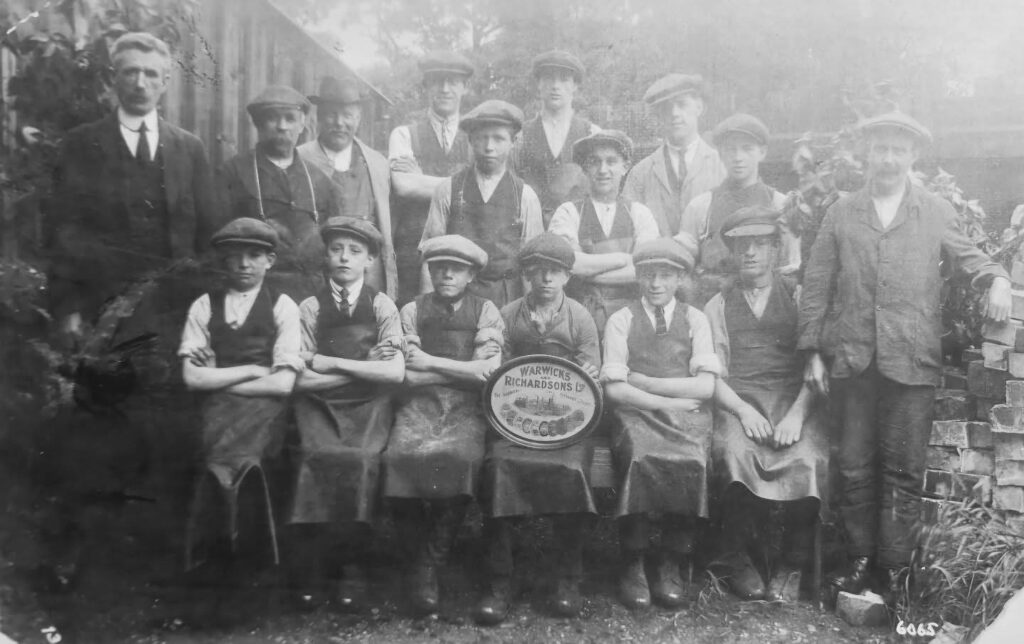
Another wonderful early oval tray advertises Craigmillar Oatmeal Stout being poured from a bottle by a lady in Edwardian costume. This was produced for William Murray & Co. Ltd of Edinburgh.
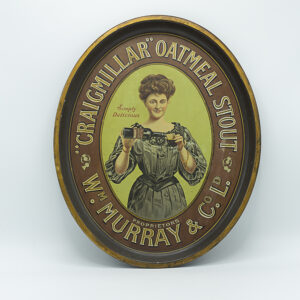
Are there any trays you are still looking for?
Despite the fact that I have a vast collection there are still at least 100 trays I would like find. I have a ‘Top 50 Wanted Section’ on the website which features those which are my priority. My focus is to add pre-war black-backed trays to my collection. These are my favourites.
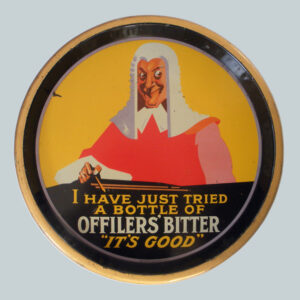
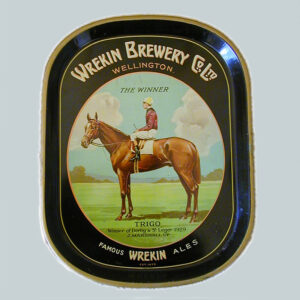
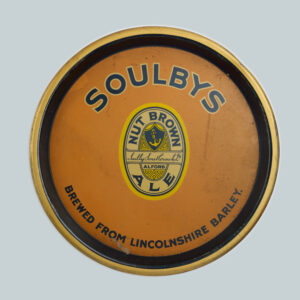
How do you date and value a particular tray?
To date a tray I follow a few simple steps.
- A Century of British Brewers, produced by the Brewery History Society, enables me to check the history of any brewery from the 1880s onwards.
- A good pointer is the material used for manufacture. Copper, brass, enamel, heavy steel, alloy, aluminium, and tin, were used during different periods.
- The manufacturer’s mark. Each had its own history and is an easy indicator of the date of manufacture.
- Actual dating on the tray itself, for example, commemorative dates, label history, fashion clues, and so on.
- Finally, my own extensive brewery tray knowledge.
Valuing a tray is a little harder but there are a number of key factors to consider.
- The age of the tray, particularly pre-Second World War versus post-Second World War.
- The rarity of the brewery. Generally, the smaller the Company with fewer public houses, the more valuable the tray.
- The design, colour, and beauty of the tray. Personally I prefer black-backed trays as these generally have more colour and design features.
- The condition. This is a key factor. Even incredibly rare trays lose most of their value if they are in poor condition, whilst a mint condition less rare tray can increase its value considerably.
Following the above guidelines, the summary below is an extremely rough indicator of value.
- Mint, or near mint, trays from the 1970s including those manufactured by Wade PDM Ltd, MB/HCW, and Salesprint Ltd, have a value of between £5 to £10.
- Square, round, or rectangular, mint or near mint trays, from the late 1950s and 1960s, including those manufactured by Reginald Corfield Ltd, Metal Box, and Hancock Corfield & Waller Ltd, have a value of between £10 to £20 for a well-known brewery, and £20 to £40 for a lesser-known brewery.
- Round or rectangular alloy trays dating from the late 1940s, to the mid-1950s, in near mint or mint condition, have a value of between £30 to £60.
- Black-backed heavy steel trays in near mint or mint condition, including those manufactured by Hancock Corfield & Waller Ltd, B.A.T.Co. Ltd, Sir Joseph Causton Ltd, or Reginald Corfield Ltd, have a value of between £40 to £100 for a well-known brewery, and £50 to £200 for a lesser-known brewery. Rare trays from the turn of the century can have a value in excess of £300.
- Copper, brass, and enamel trays, in near mint or mint condition, surprisingly are less valuable than black-backed trays. Examples in near mint or mint condition, have a value of between £30 to £50 for a well-known brewery, and £50 to £100 for a lesser-known brewery. Only exceptional enamel trays with ornate designs have a value of over £100.
If you would like your tray valuing please use the contact form and send details and a photograph if possible.
Does anyone else collect trays?
I only know of three other collectors who specifically collect trays. There are many breweriana collectors who enhance their own collection with one or two striking examples. I would encourage young new collectors to focus on trays and would be willing to advise them in any way.
Where do you find trays?
There are three main sources of adding trays to my collection.
 adds about one new tray every six months.
adds about one new tray every six months.- Fellow collectors. I have an extensive network of other collectors and dealers who keep their eyes out for rare trays. Many thanks to Colin Tetley and Mick Rafferty who have turned up many great trays for me over the years.
 I am new to this area but it is worth using this media outlet. It does require effort to make regular postings.
I am new to this area but it is worth using this media outlet. It does require effort to make regular postings.
Other events have added trays to my collection such as BBR’s Summer National at Elsecar which is held in July, or big antique fairs such as Newark, however these sources have proved more of a social get together in recent years.
What do my family and friends think about my collection?
At first my family thought I was raving mad, and were particularly embarrassed when I would ask publicans for their spare trays. They would cringe when my opening line was ‘I have an unusual collection’. These days they are more accepting of my passion for preserving brewery history. My closest friends continue to take the mickey, but deep down I believe they are impressed too.
What happened to trays after 1970?
Trays were manufactured after 1970, however the volume of production runs diminished and by the 1990s only odd bespoke trays were produced. Breweries realised there were better ways to advertise their products. I am sure ‘Elf & Safety’ have influenced the demise of these wonderful items, after all, they could prove to be lethal if handled incorrectly. I gest but you get the picture!
How do I start collecting trays?
Some people ask me ‘How do I start collecting trays’? The advice I would give is to focus on an era such as the 1960s and 1970s, or from a county or city. Limit your collection to 100 so that once you have reached that threshold it’s a discipline of one in one out. Set yourself a spending limit of £50 for instance. Then regularly search Ebay and Facebook. Don’t be afraid to contact other collectors including myself. We would like to help.
Good luck!

